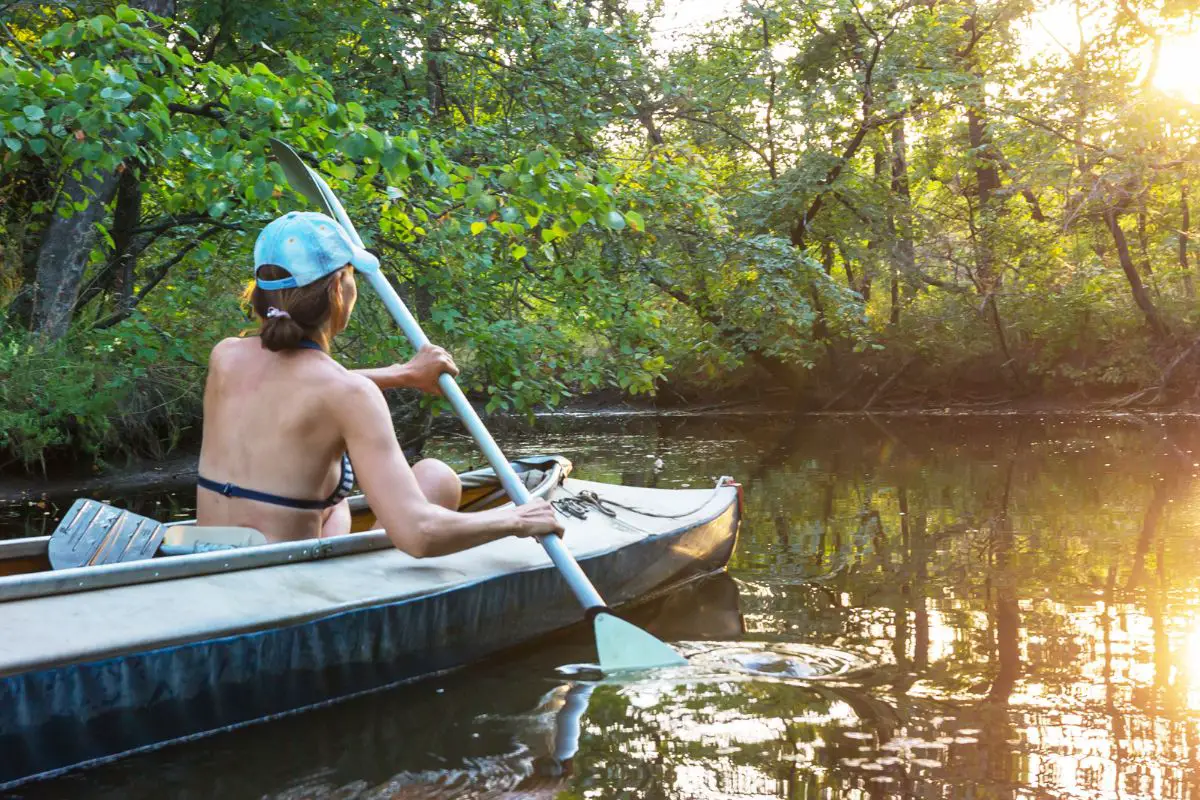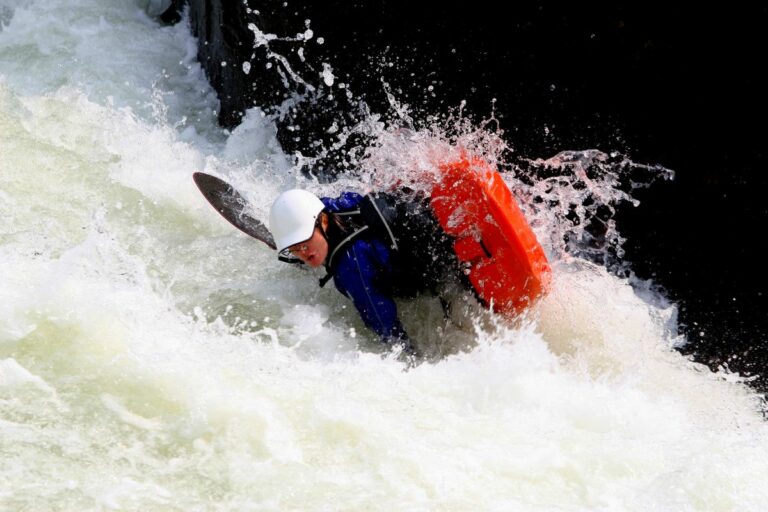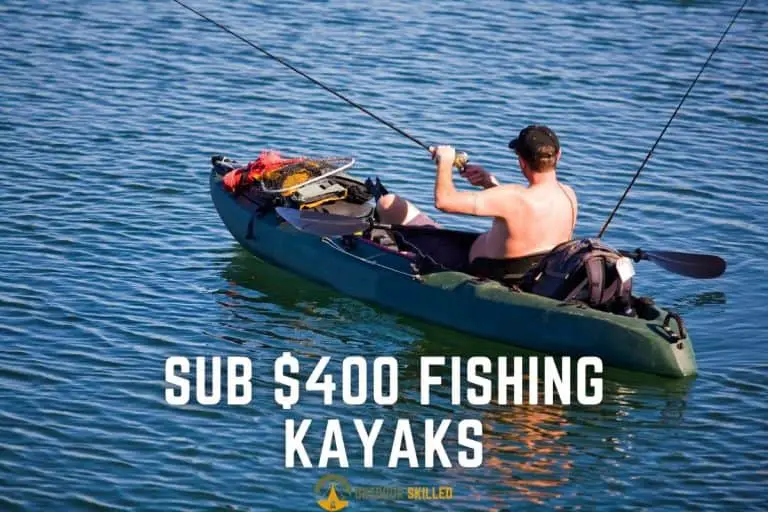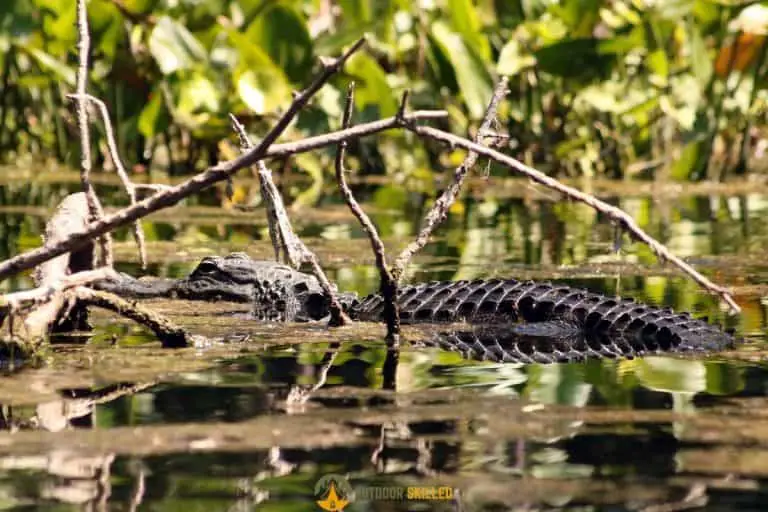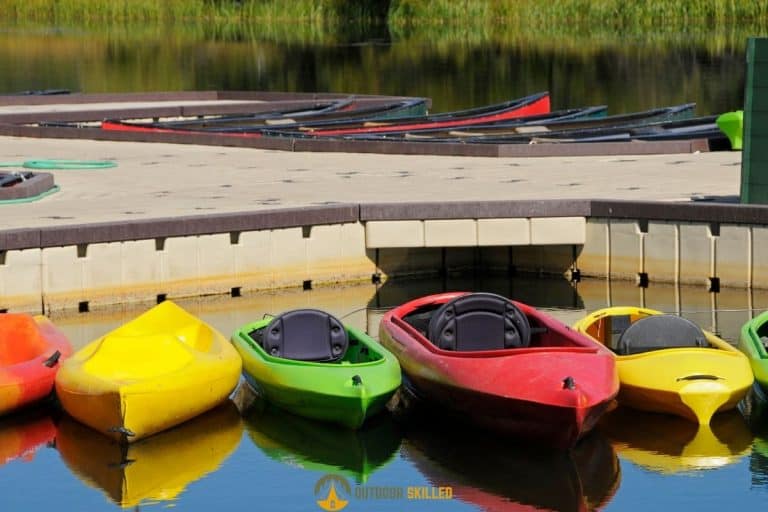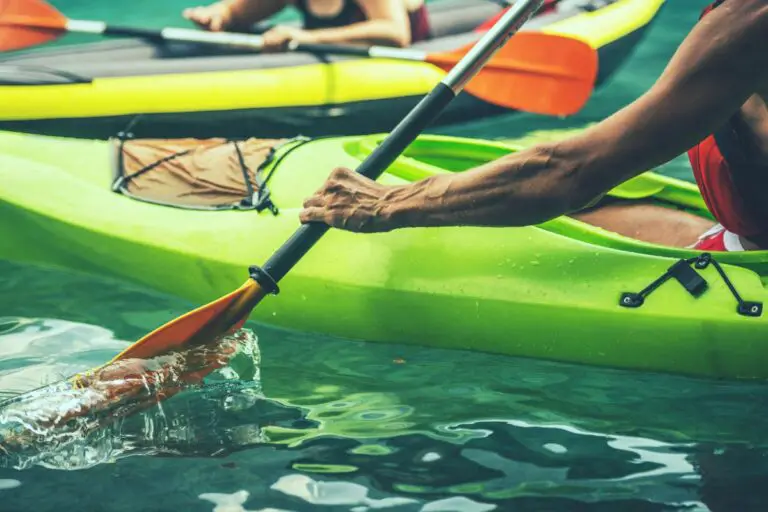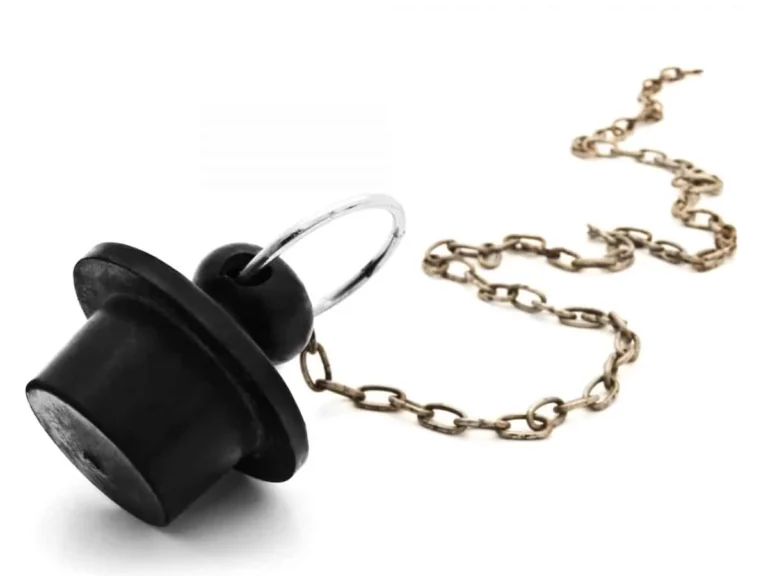How Far Can You Kayak in A Day? 7 Tips to Kayak Longer Distances
Kayaking can be an exhilarating and rewarding experience, offering a unique way to explore the great outdoors and connect with nature. However, when planning a kayaking trip, it’s important to set realistic expectations when it comes to your speed and how far you can actually travel.
So, how far can you kayak in a day? And what can you do to kayak further?
You can typically kayak around 10 to 20 miles per day if you’re maintaining a speed of 3 to 4 miles per hour. The distance covered depends on various factors, including the kayak’s design, the speed you’re going at, the weather and water conditions, and your overall abilities as a paddler.
Keep reading to learn more about the factors that affect the distance covered while kayaking and how to kayak for longer distances.
Table of Contents
How Far Can You Kayak in A Day?
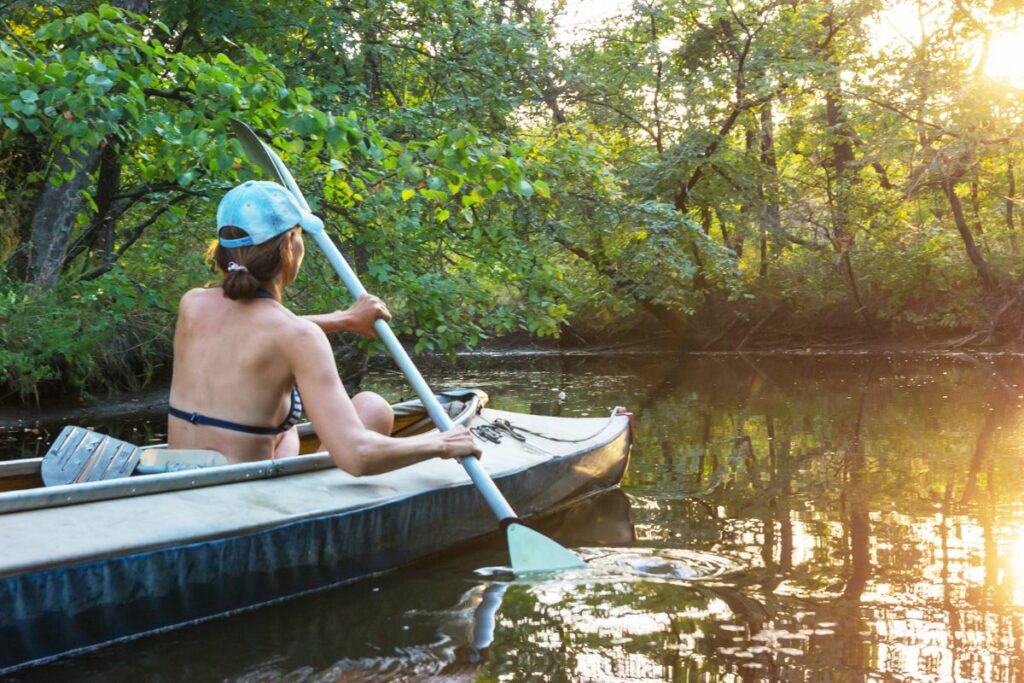
Typically, a moderately fit paddler can kayak for about 6 to 8 hours a day. You can kayak about 3 to 4 miles in one hour, so it’s estimated that you can cover around 10 to 20 miles in a day if you’re maintaining the same speed of 3 to 4 miles per hour.
However, the exact distance you cover in a day will depend on several factors, and it’s important to understand these factors to set realistic expectations about how far you can go during your trip and plan your route accordingly.
Factors That Affect the Distance Covered While Kayaking
- Kayak Design: Longer and narrower kayaks are faster and more efficient, allowing the kayaker to cover greater distances with less effort. However, they may not be as stable as wider kayaks, which could impact the paddler’s ability to maneuver in rough waters.
- Kayak Speed: The speed at which you kayak has a significant effect on the distance covered in a day. You can learn more about the average speed of a kayak and the factors that affect it here.
- Weather and Water Conditions: Weather and water conditions can play a significant role in determining how far a kayaker can travel in a day.
- Rough waters, strong currents, and headwinds can slow down the paddler’s speed and make it more challenging to cover long distances. Conversely, calm waters and favorable weather conditions can make it easier to travel greater distances.
- Kayaker’s Skill and Fitness Level: Experienced paddlers with good technique and endurance can cover more distance than novice kayakers.
- Additionally, paddling can be a physically demanding activity, and a paddler’s overall fitness level can impact their ability to paddle for longer periods without getting tired or fatigued.
How to Calculate the Distance You Covered While Kayaking?
To calculate the distance covered while kayaking, you can use a GPS device or a smartphone app to track your kayaking route and record the distance covered during your trip.
If you don’t have a GPS device or app, you can estimate the distance covered by using a mapping tool such as Google Maps. First, map out your kayaking route and measure the distance using the tool’s distance measurement feature.
Make sure to take into account any detours, stops, or changes in speed during your trip, as this can affect the actual distance covered.
To calculate the distance covered per hour, divide the total distance by the number of hours spent kayaking. For example, if you covered 10 miles during a 2-hour kayaking trip, your average speed would be 5 miles per hour.
By calculating your kayaking distance, you can better plan your route and determine how far you can kayak in a day, taking into account your skill level, kayak design, and weather conditions.
Distance Calculator:
If you know (roughly) the speed at which you were kayaking and the time you spent kayaking (in hours), you can use our simple calculator below:
Kayaking Distance Calculator
What Is the Longest Distance Covered in A Kayak?
The longest distance covered in a kayak is the 11,620-mile journey by Freya Hoffmeister, a German kayaker who circumnavigated the entire coastline of Australia in 2009-2010. It took her 322 days to complete the journey, which is considered one of the greatest achievements in modern sea kayaking.
Other notable long-distance kayaking records:
- Aleksander Doba’s solo crossing of the Atlantic Ocean in 2017, covering 5,400 miles from New Jersey to France in 110 days.
- Oskar Speck’s 7-year journey from Germany to Australia in the 1930s, covering 50,000 kilometers (31,068 miles) in a folding kayak.
- Tara Mulvany’s 2018 circumnavigation of Great Britain, covering 2,414 miles in 90 days.
- Joe O’Blenis’ journey from the Pacific Ocean to the Atlantic Ocean across Canada, covering 4,750 miles in 233 days.
These records demonstrate the incredible endurance and skill required to undertake long-distance kayaking journeys, as well as the importance of careful planning and preparation to ensure safety and success.
7 Tips to Help You Kayak Longer Distances
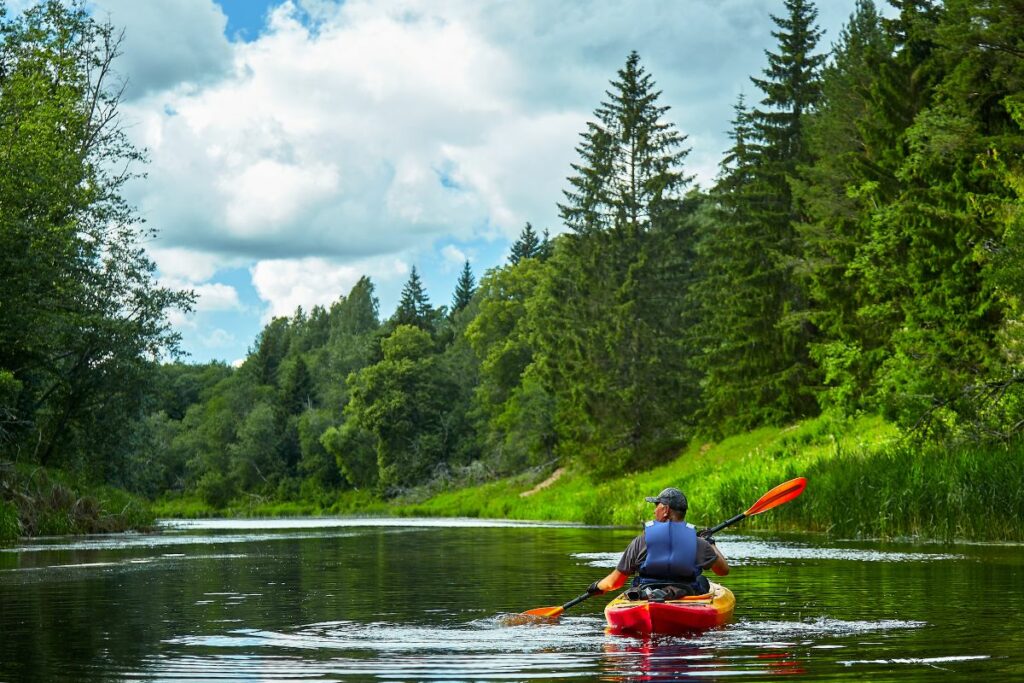
Here are some tips to help you kayak longer distances:
- Build up your endurance gradually: Start with shorter trips and gradually increase your distance and duration as your fitness level improves.
- Use proper technique: Good technique reduces strain on your muscles and allows you to paddle more efficiently, conserving your energy for longer distances.
- Choose the right kayak: Select a kayak that suits your size, skill level, and the type of water you’ll be paddling on.
- Dress appropriately: Wear lightweight, moisture-wicking clothing and dress in layers to regulate your body temperature.
- Hydrate and fuel up: Drink plenty of water to stay hydrated and eat energy-rich snacks such as trail mix, fruit, and energy bars to keep your energy levels up.
- Take breaks and stretch: Take short breaks every hour or so to stretch your muscles and rest your arms, neck, and shoulders.
- Check weather and water conditions: Be aware of weather conditions and water conditions, such as wind, waves, and tides, which can affect your speed and endurance.
By following these tips, you can increase your kayaking endurance and tackle longer distances with confidence and ease.
Kayak your way to Freedom
- On a budget? Check out the best fishing kayaks under $500 here and the best Fishing Kayaks under $1,000 here. Or Check the best Cheap Kayaks here.
- Going fishing? Here are the best Ocean fishing kayaks, and here are the best River Fishing Kayaks.
- You can also find the best Fly Fishing Kayaks here and the best Bass Fishing Boats here.
- A bit experienced? Check out the best modular kayaks here and the best tandem fishing kayaks here.
- Looking for something special? Check out my favorite Ducky kayaks here.
- Navigate your way with these awesome and beginner-friendly Kayak compasses.
- Going Hunting? These Duck hunting kayaks will give you an unfair advantage!
- Have a need for speed? These motorized kayaks will get you moving.
- Protect yourself from the sun with these Kayak shades, and make your kayak more comfortable with these Kayak seats.
- Keep your feet dry and warm with these superb Kayaking shoes.
- Going Kayaking in cold water? Stay warm with these Kayaking gloves.
- Paddle Less, Fish More with the Best Kayak Motors
- Looking to get a trolling motor on your kayak? Check out the best kayak trolling motor mounts here.
If you like this article, please share it or pin it, you can find the share buttons below. We will really appreciate it ❤️

